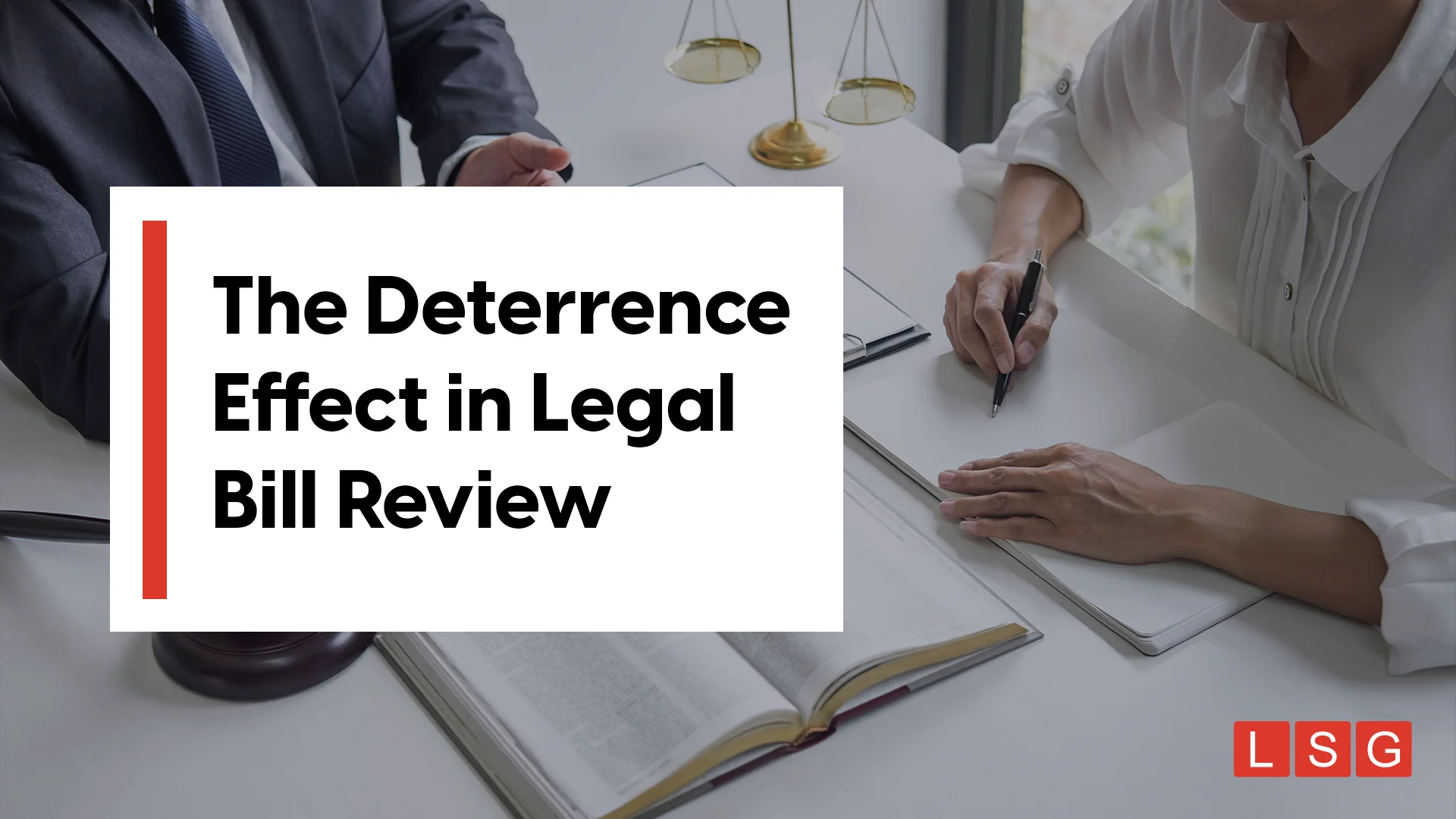Blog
The “Deterrence Effect” in Legal Bill Review
Published by Matthew S. Markham on Sep 11, 2020

When an entity hasn’t engaged a legal bill review (LBR) service when receiving large volumes of invoices from vendors, including law firms and non-law firms, they often face billing errors and overbilling. In other words, that entity is being billed for more than they should be, whether accidental or systematic. But, when that entity finally employs a legal bill review (LBR) service, the amount of savings they incur over the first two years can be significant.
A Blue Hill Research study found a Return On Investment (ROI) for enterprise legal management (ELM) software of ~7-8x. That software typically works in conjunction with a manual legal bill audit, or offers that service as an innate feature. For example, Mercury ELM utilizes guideline non-compliance (GNC) codes with machine learning to allow our software to parse and review invoices automatically, pulled directly from users’ Outlook/Gmail.
For fringe cases, a flagging feature alerts users when line items or invoices cannot be automatically parsed and require manual review. We typically see ROI with Mercury ELM that reach 10-12x, which does not include the time savings, full time employee reallocation or the deterrence effect.
A trend we’ve noticed in our 15 years of providing LBR is that, as time goes on, the legal fee audit service will find fewer and fewer instances of errors and overbilling. In other words, billing compliance approaches 100%, and the ROI is driven by other factors than solely line item savings. When that happens, it may seem like the legal bill review service is no longer worth the cost. Even at a cost of 1% of legal spend, we occasionally have these conversations, but we are also seeing a lot of inbounds from clients currently paying 2% to 2.5% in 2020, if you can believe it!
While we think ELM/LBR cost is an important factor in the ROI calculation, we also think it’s important to share another aspect of the calculation. In this article, we will be discussing, and coining, the “Deterrence Effect” in legal bill review.
What is the Deterrence Effect in Legal Bill Review?
The Deterrence Effect is the return on investment provided by a legal fee auditing service deterring non-compliant e-billing practices. An easy way to understand this principle is to think of a cat who scratches its owner’s furniture. Its owner decides to spray the cat with water any time it is caught scratching something. Repeated over and over, the cat eventually stops scratching. But the owner keeps the sprayer on display at all times, because they know the cat will scratch again if it isn’t discouraged. Even after years, the cat knows the sprayer is there, and that’s enough to keep it from scratching. This, in essence, is the Deterrence Effect. And it works just as well in the world of legal bill audit services.
The Impact of the Deterrence Effect on Legal Bill Audit ROI
Just like the cat with the sprayer, law firms and non-law firm vendors realize the new normal after repeatedly getting caught with error-ridden, padded invoices. They typically aren’t trying to bill in a non-compliant fashion, but they haven’t had billing guidelines enforced (or not enforced well in some cases where a less experienced legal fee auditor is involved). Once the legal bill review service is implemented, they typically start submitting bills that are far more reasonable and compliant. This is driven by line item rejection/modification, and triage with a vendor resolution service desk. In our case, we call this the Resolution Desktop (RDT).
The other side of this coin is watching your savings become smaller and smaller as the years go by. Let’s say, in the first two years you have it, your legal bill review service delivered savings of 20%, a healthy annual saving, but also an indication of quite poor e-billing practices. After a while, with legal invoice review, the bills have become more compliant, and the service is only saving you 5%, one fourth of what you started with. The service is certainly still producing savings, but you miss that 20% windfall. It can feel like the service is no longer worth what it costs. With a 1% of legal spend cost, we are still offering a 5x ROI at that level, but vendors charging 2.5% only offer a 2x ROI. So, you turn the service off.
By doing that, you remove the Deterrence Effect. Vendors, including law firms and non-law firms, notice they aren’t getting pushback for minor errors anymore. New employees at your vendors’ firms also don’t learn to conform to your billing guidelines . And the number of errors grows larger. Eventually, you realize the size of your bills have skyrocketed — and you might realize this more nuanced aspect of legal bill review ROI.
Stay the Course with Active Legal Fee Auditing
If you employ a sophisticated legal fee auditor, it’s best to maintain your partnership even after the savings have dropped off from the first few years of major compliance fixes. The small cost of these services typically outweighs what you’ll have to pay once The Deterrence Effect is no longer keeping vendors compliant. We’ve seen this time and time again over 15+ years in the business. By keeping your service active, you’re keeping the people sending you bills in line, saving your business a serious headache. If you’d like to know about other nuanced factors of the legal bill review ROI calculation, feel free to reach out and we can share a white paper, only available upon request.



